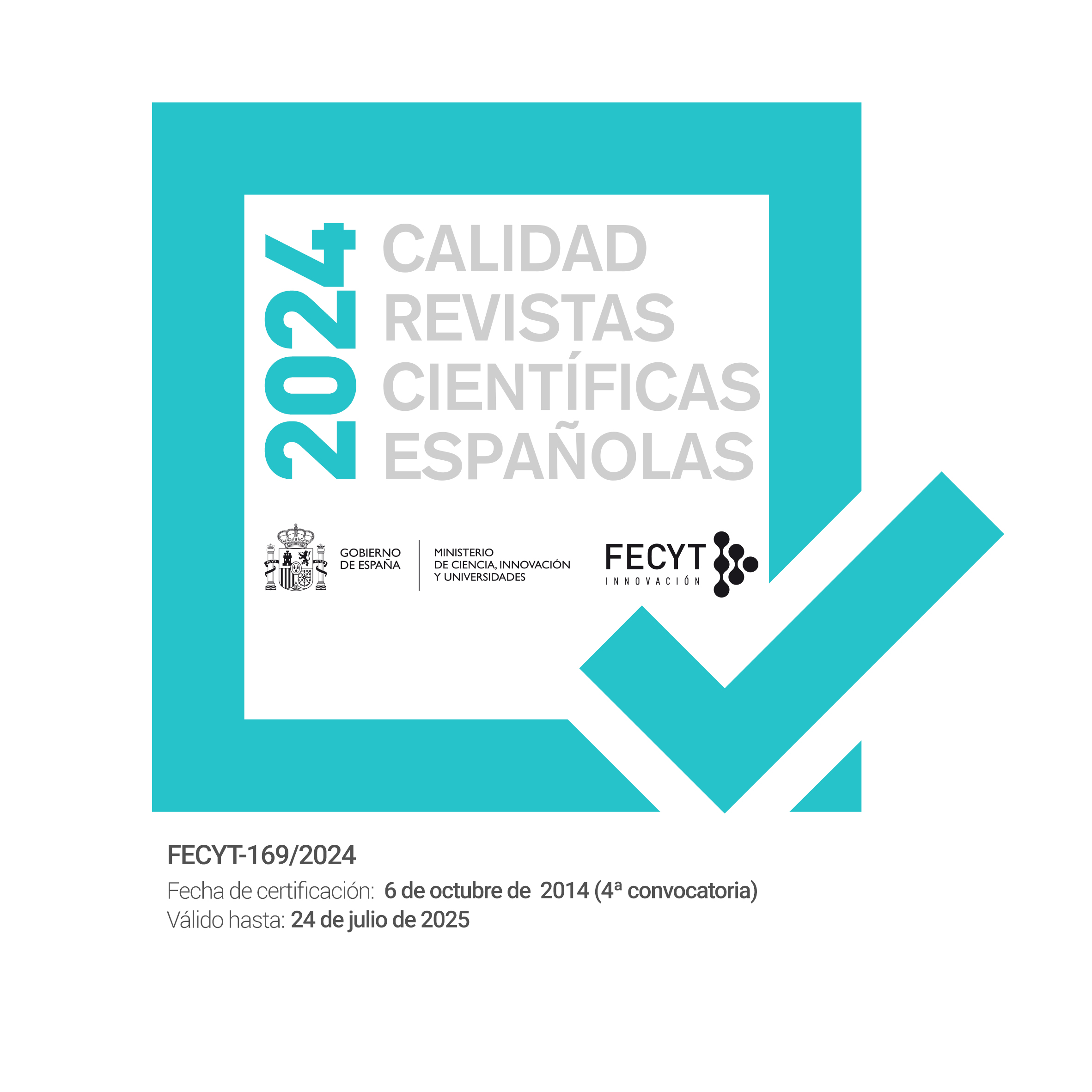The creation of a picture book as a bilingual education proposal in Secondary Education
DOI:
https://doi.org/10.30827/portalin.vi44.34201Keywords:
bilingual education, CLIL, Pedagogy of Multiliteracies, Learning by Design, picturebookAbstract
This article analyzes a proposal for the reception and creation of a picture book with a bilingual group of 1st-year secondary students (1º de ESO), following a CLIL approach and the Pedagogy of Multiliteracies (Bill and Kalantzis, 2009). The aim was to examine students’ engagement in knowledge processes (experiencing, conceptualizing, analyzing, and applying) as well as their aesthetic and cognitive contributions. The proposal was implemented with around fifty students from three groups at a secondary school in Zaragoza, although the study focused on the bilingual group, composed of 17 students who engaged in a shared reading of Revolting Rhymes, written by Roald Dahl and illustrated by Quentin Blake. Working in groups, the students designed four illustrated picturebooks based on different tales from the original work. The educational research followed a classroom-based action research methodology, using both closed and open self-perception questionnaires. Along with teacher observation and the students’ final products, these instruments allowed the conclusion that the proposal promoted broad student engagement and that the active construction of knowledge (available design, designing, and redesigned outcomes) was largely satisfactory in both its artistic and linguistic dimensions.
Downloads
References
Antsey, M. (2008). Postmodern Picturebooks as Artefact. En L. Sipe y S. Pantaleo, Postmodern Picturebooks. (Eds.) Play, Parody and Self-Referentiality. Routledge.
Anstey, M. y Bull, G. (2018). Foundations of Multiliteracies Reading, Writing and Talking in the 21st Century, Routledge.
Bader, B. (1976). American Picturebooks from Noah's Ark to the Beast Within. Macmillan.
Cope, B. y Kalantzis, M. (2009). ‘Multiliteracies’: New Literacies, New Learning. Pedagogies: An International Journal, 4, (3), 164-195. https://doi.org/10.1080/15544800903076044
Cope, B. and Kalantzis, M. (2009). “‘Multiliteracies’: New Literacies, New Learning”, Pedagogies: An International Journal, 4 (3),164-195
Cope, B. y Kalantzis, M. (2010). Gramática de la multimodalidad. Boletín de la Asociación Andaluza de Bibliotecarios, 98-99: 93-152.
Coyle, D. (2005). Developing CLIL: Towards a Theory of Practice, in CLIL in Catalonia, from Theory to practice, (pp. 5-29). APAC.
Cristóbal, R., Sanjuán, M. y Villar, E. M. (2023). Análisis y evaluación de una estrategia didáctica para el aprovechamiento de libros álbum de no-ficción en Educación Primaria. Estudios λambda Teoría y práctica de la didáctica en lengua y literatura. Vol. 8 (1). https://doi.org/10.36799/el.v8i1.129
Elliott, J. (1993). El cambio educativo desde la investigación-acción, Morata.
García-Barroso, L. y Fonseca-Mora, M. (2023) Multiliteracies for adult language learners: a
narrative review, Porta Linguarum, 40: 119-213.
García, M., Arizpe, E. y Casals, A. (Eds.) (2023). Campo en formación. Textos claves para la crítica de la literatura infantil y juvenil. Metales pesados.
Guevara Alban, G. P., Verdesoto Arguello, A. E., y Castro Molina, N. E. (2020). Metodologías de investigación educativa (descriptivas, experimentales, participativas, y de investigación-acción). RECIMUNDO, 4(3), 163–173. https://doi.org/10.26820/recimundo/4.(3).julio.2020.163-173
Kalantzis, M., y Cope, B. (2005). Learning by design, Victorian Schools Innovation Commission.
Kress, G. (2010). Multimodality: A Social Semiotic Approach to Contemporary Communication. En Revista Latinoamericana de Estudios del Discurso. 12 (1).
Latorre, A. (2007). La investigación-acción. Conocer y cambiar la práctica educativa. Graó.
Martínez, R. A. (2007). La investigación en la práctica educativa: Guía metodológica de investigación para el diagnóstico y evaluación en los centros docentes. Centro de Investigación y Documentación Educativa (CIDE).
Mehisto, P., Marsh, D. y Frigols, M. F. (2008). Uncovering CLIL, Macmillan.
New London Grupo (1996). A pedagogy of multiliteracies: Designing social futures. Harvard Educational Review, 66, 60-92.
Nikolajeva, M. y Scott, C. (2001). How Picturebooks Work. Garland.
Nodelman, P. (1990). Words about Pictures: The Narrative Art of Children’s Picture Books. University of Georgia Press.
Reyes, A. y Portales, M. (2020). Multimodal Approach to Foster the Multiliteracies Pedagogy in the Teaching of EFL through Picturebooks: The Snow Lion, Journal of the Spanish Association of Anglo-American Studies, 42 (1), 94-119, http://doi.org/10.28914/Atlantis-2020-42.1.06
Reyes, A. y Villacañas, L.S. (2020). La literatura en la clase de inglés: una propuesta sobre la diversidad para Primaria y Secundaria. En N. Ibarra (coord.), Identidad, diversidad y construcción de la ciudadanía a través de investigación en educación literaria (pp. 117-132). Octaedro.
Sipe, L. (2000). How Picture Books Work: A Semiotically Framed Theory of Text- Picture Relationships. Children’s Literature in Education, 29 (2), 97-108.
Van Der Linden, S. (2015). Álbum[es]. Ekaré.
Villanueva, J. D., Cristóbal. R. y Nowakowska, P. (2022) La dramatización como elemento motivador en la clase de ELE. En Ortega-Martín, Pearse Hughes y Corral-Robles (Eds.). Investigación en innovación en didáctica de la lengua y la literatura. Homenaje a Daniel Madrid Fernández (pp. 601 – 614). GEU editorial.
Downloads
Published
How to Cite
Issue
Section
License
Copyright (c) 2025 Rubén Cristóbal Hornillos, José Antonio Escrig Aparicio, Raquel Temprado Baquedano

This work is licensed under a Creative Commons Attribution 4.0 International License.



















